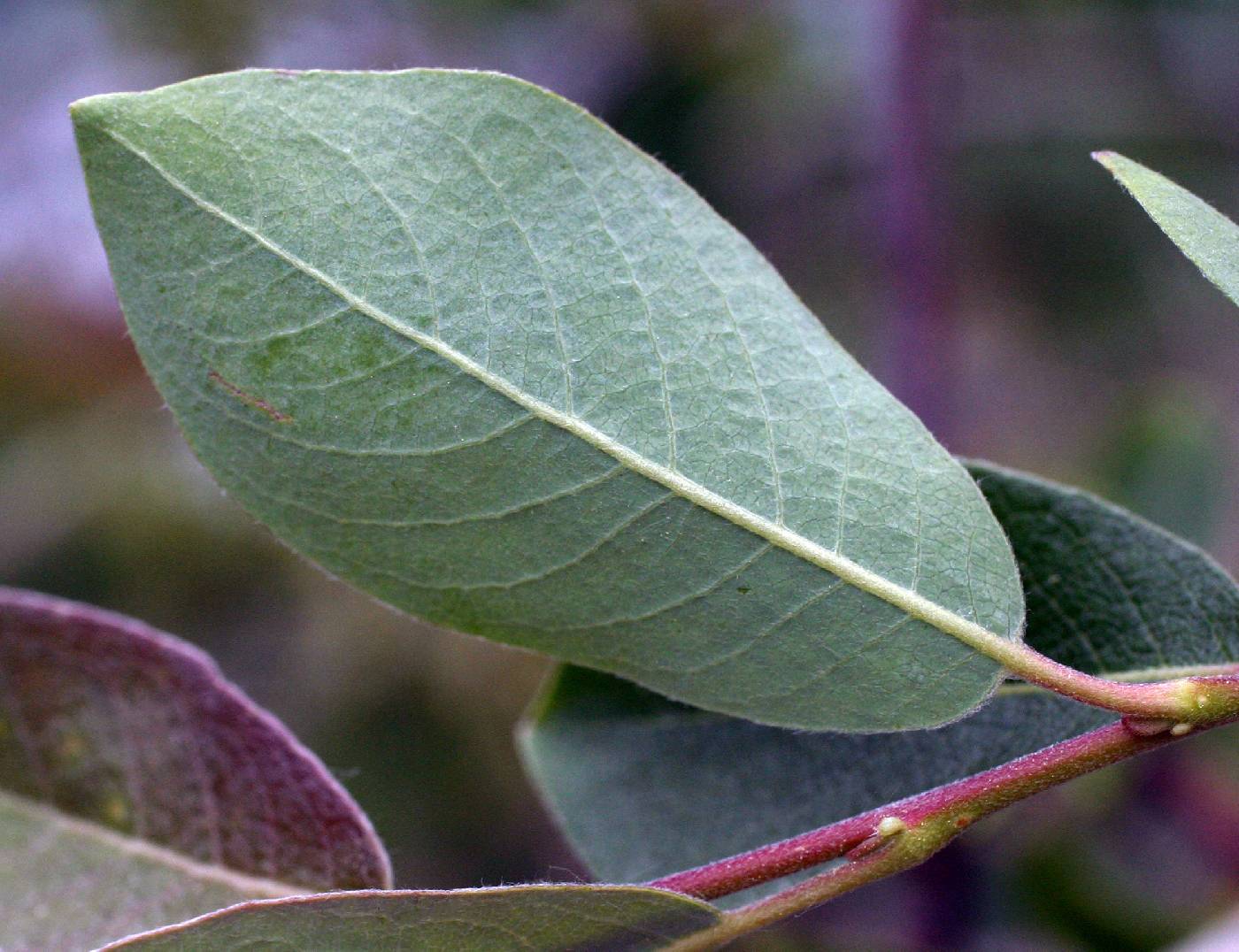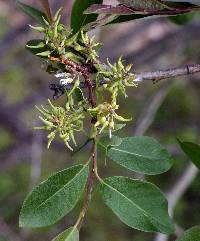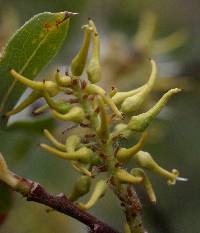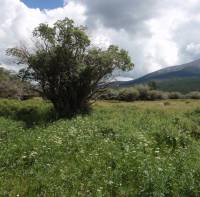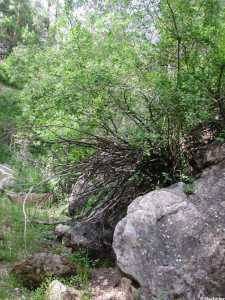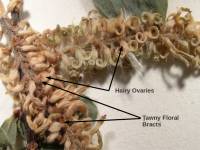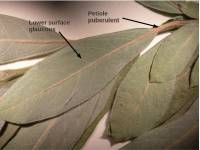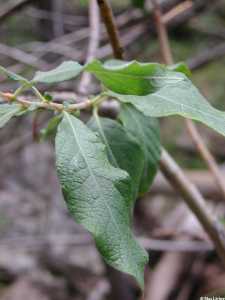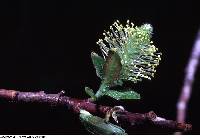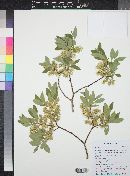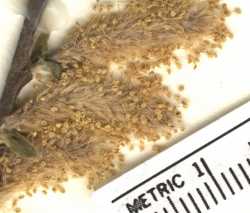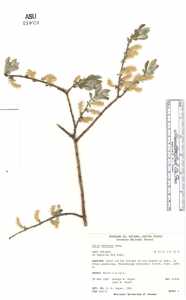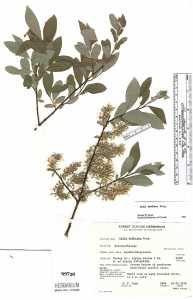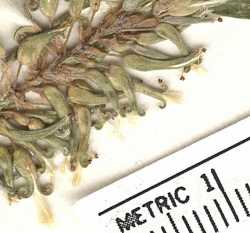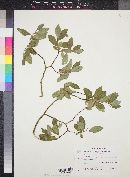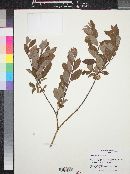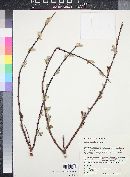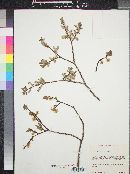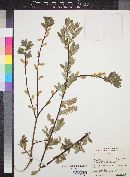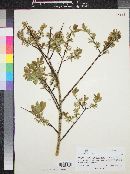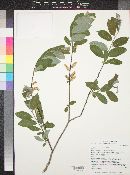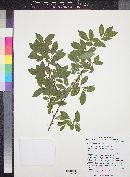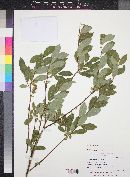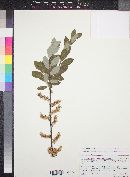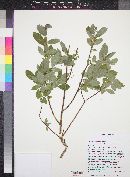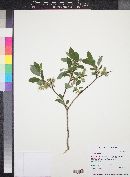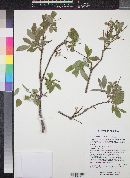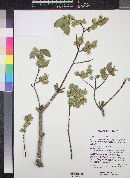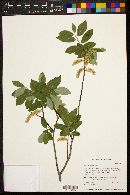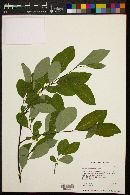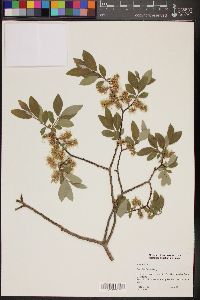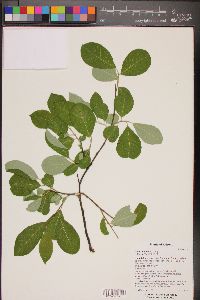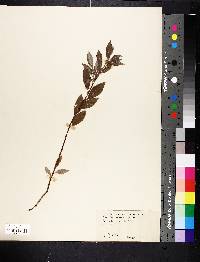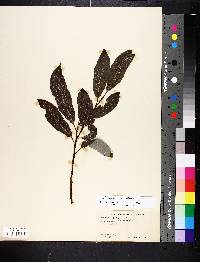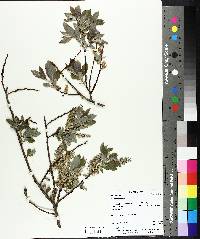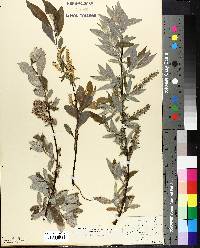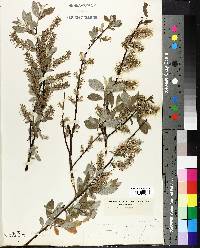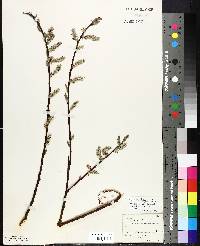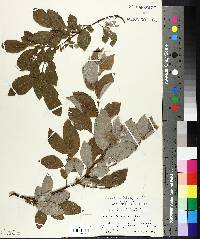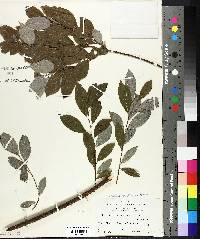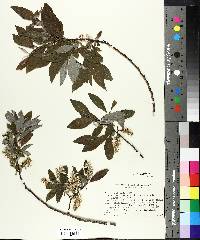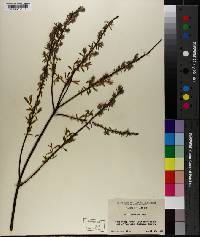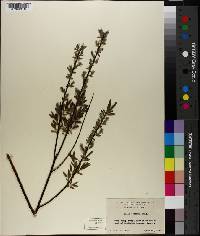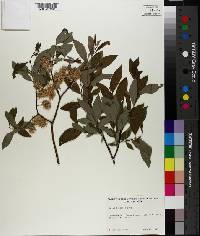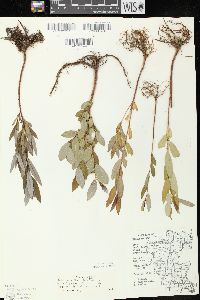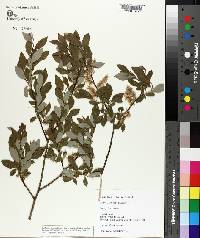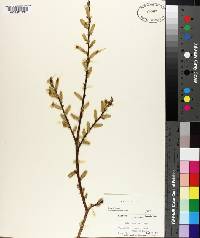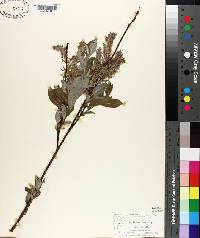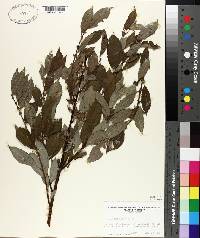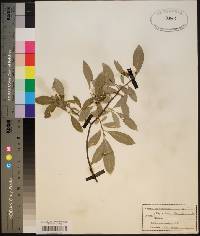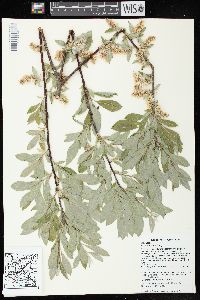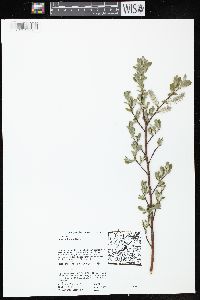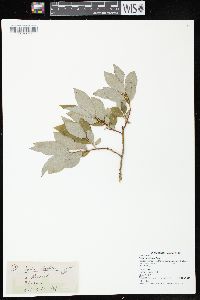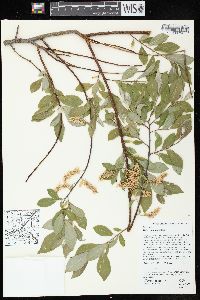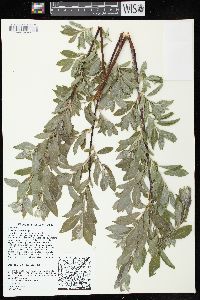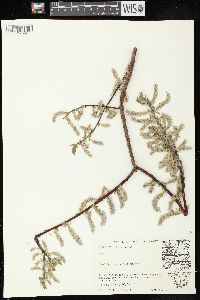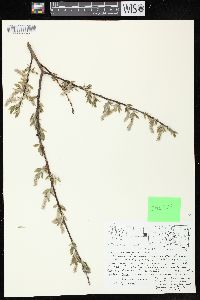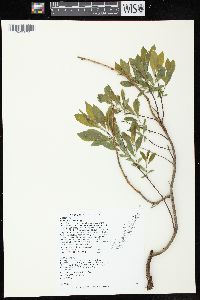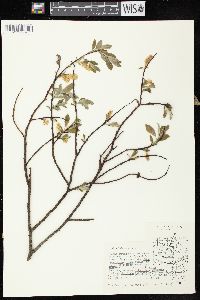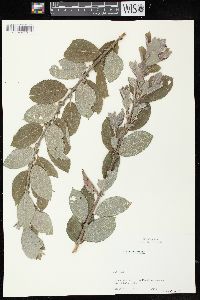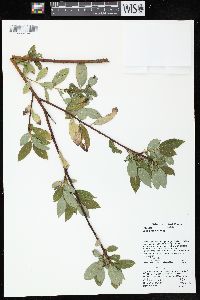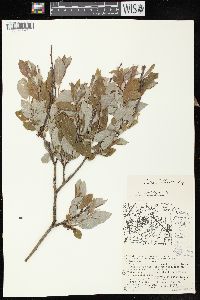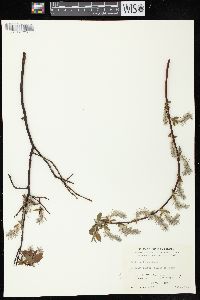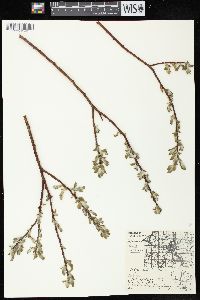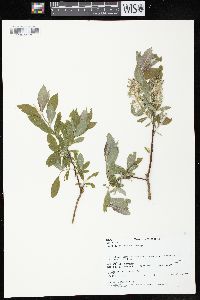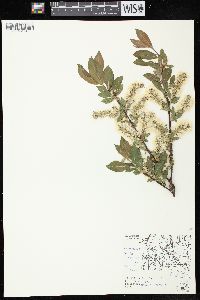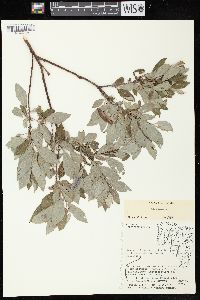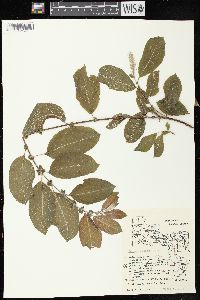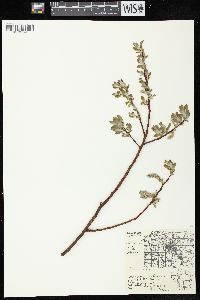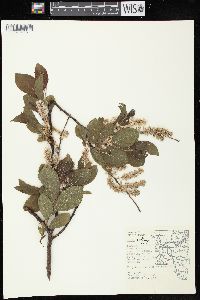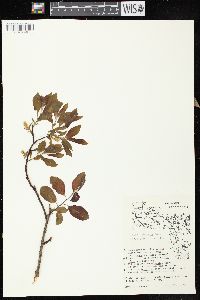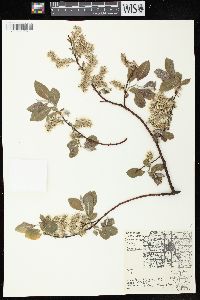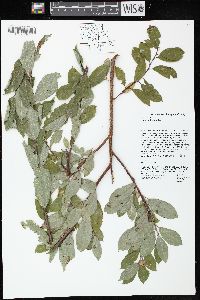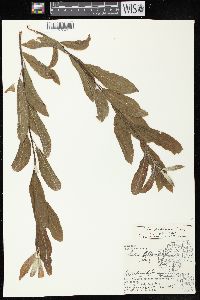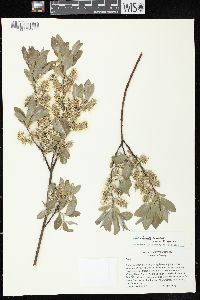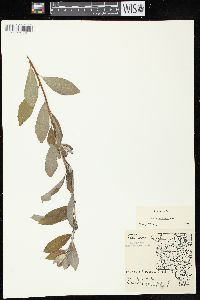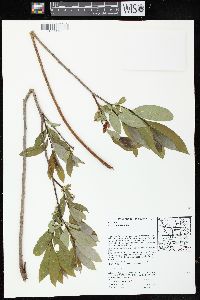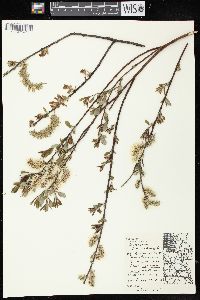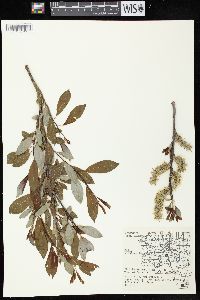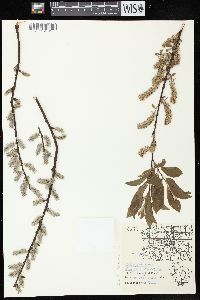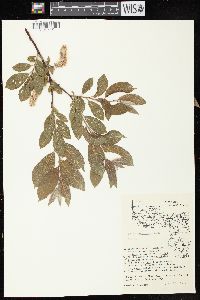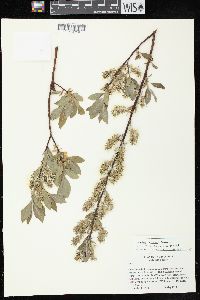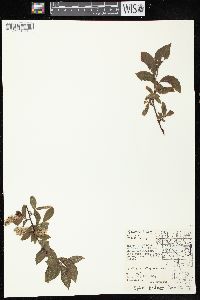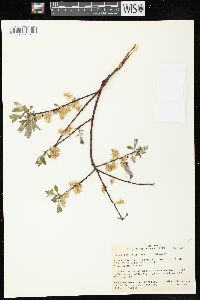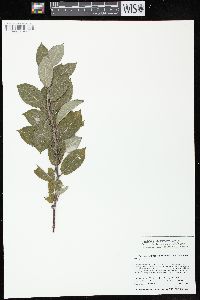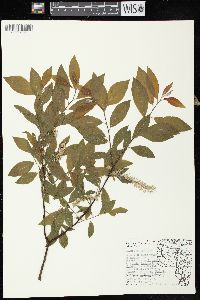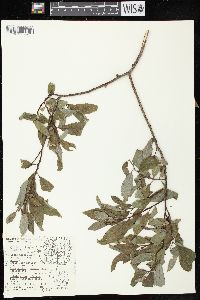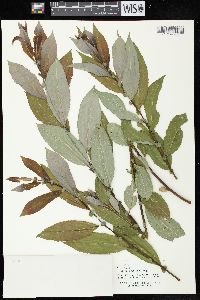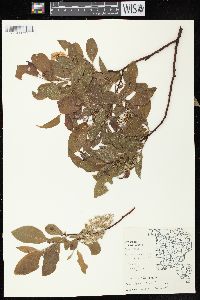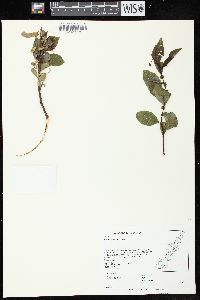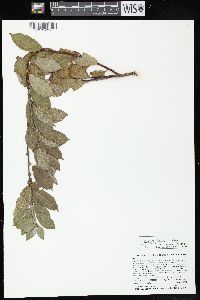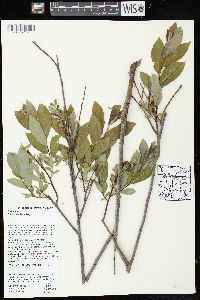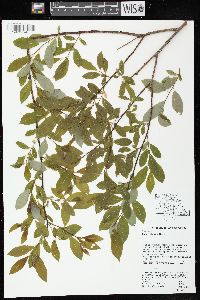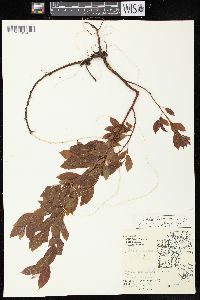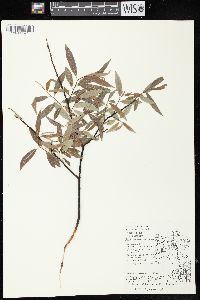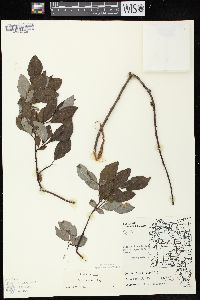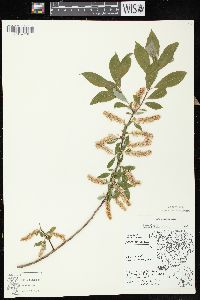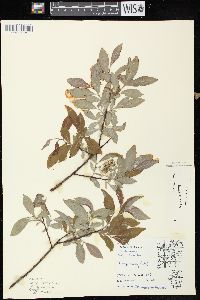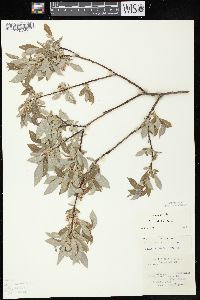
|
|
|
|
Family: Salicaceae
Bebb willow, more...Gray Willow, Bebb's willow
[Salix bebbiana var. capreifolia (Fernald) Fernald, moreSalix bebbiana var. depilis Raup, Salix bebbiana var. luxurians (Fernald) Fernald, Salix bebbiana var. perrostrata (Rydb.) Schneid., Salix bebbiana var. projecta (Fernald) Schneid., Salix depressa subsp. rostrata (Richards.) Hiitonen, Salix livida var. occidentalis (Anderss.) A. Gray, Salix livida var. rostrata (Richards.) Dippel, Salix perrostrata Rydb., Salix rostrata Richards., non Thuill., Salix rostrata var. capreifolia Fernald, Salix rostrata var. luxurians Fernald, Salix rostrata var. perrostrata (Rydb.) Fernald, Salix rostrata var. projecta Fernald, Salix starkeana subsp. bebbiana (Sarg.) Youngberg, Salix vagans var. occidentalis Anderss., Salix vagans var. rostrata (Richards.) Anderss., Salix xerophila Flod.] |
Stems: branches divaricate, sometimes ± brittle at base, yellow-brown to dark red-brown, not or weakly glaucous, pilose to glabrescent, peeled wood often with very dense striae, to 25 mm; branchlets yellow-green or red-brown, moderately to very densely villous to glabrescent. Leaves: stipules rudimentary or absent on early ones, apex acute, acuminate, or convex; petiole convex to flat adaxially, 2-5.5-13 mm, pubescent adaxially; largest medial blade narrowly oblong, narrowly elliptic, elliptic, oblanceolate, or obovate, 20-44-87 × 10-16-45 mm, base cuneate, convex, or rounded, margins flat, entire, crenate, or irregularly serrate, glands submarginal, apex acute, acuminate, or convex, abaxial surface glaucous, moderately densely pubescent or long-silky to glabrescent, hairs white or gray, wavy, adaxial finely impressed-reticulate, dull or slightly glossy, moderately densely pubescent, sparsely short-silky, or glabrescent, hairs white or gray; proximal blade margins entire, gland-dotted; juvenile blade yellowish green or reddish, pilose or sparsely to moderately densely tomentose or long-silky abaxially, hairs white. Catkins: staminate flowering just before leaves emerge, pistillate flowering as leaves emerge; staminate stout to globose, 10-42 × 7-16 mm, flowering branchlet 0.5-11 mm; pistillate loosely flowered, stout, slender, or subglobose, 16.5-85 × 9-32 mm, flowering branchlet 1-26 mm; floral bract tawny, 1.2-3.2 mm, apex rounded, abaxially hairy to glabrescent, hairs straight or wavy. Staminate flowers: adaxial nectary oblong or ovate, 0.3-0.8 mm; filaments distinct or connate less than 1/2 their lengths, glabrous or hairy on proximal 1/2; anthers yellow or purple turning yellow, ellipsoid or shortly cylindrical, 0.5-0.8 mm. Pistillate flowers: adaxial nectary oblong or square, 0.3-0.8 mm; ovary obclavate, beak slightly bulged below styles (long-beaked); ovules 6-16 per ovary; styles 0.1-0.4 mm; stigmas slenderly to broadly cylindrical. Capsules 5-9 mm. 2n = 38. Flowering early Apr-late Jun. Riparian and upland conifer forests, wet lowland thickets, Picea mariana treed bogs, stream margins, lakeshores, prairie margins, dry south-facing slopes, cienegas, seeps, disturbed areas; 0-3300 m; Alta., B.C., Man., N.B., Nfld. and Labr., N.W.T., N.S., Nunavut, Ont., P.E.I., Que., Sask., Yukon; Alaska, Ariz., Calif., Colo., Conn., Idaho, Ill., Ind., Iowa, Maine, Md., Mass., Mich., Minn., Mont., Nebr., Nev., N.H., N.J., N.Mex., N.Y., N.Dak., Ohio, Oreg., Pa., R.I., S.Dak., Utah, Vt., Wash., Wis., Wyo.; Asia. Salix bebbiana occurs in Nunavut on Akimiski Island in James Bay. Hybrids: Salix bebbiana forms natural hybrids with S. candida, S. geyeriana, S. humilis, and S. petiolaris. Reports of hybrids with S. discolor (C. K. Schneider 1921; M. L. Fernald 1950) are not based on convincing specimens, and synthetic hybrids could not be made (G. W. Argus 1974). Reports of hybrids with S. eriocephala and S. myricoides (Fernald) are unverified. Controlled pollinations with S. eriocephala and S. interior had low seed viability (A. Mosseler 1990). Salix bebbiana × S. candida (S. ×cryptodonta Fernald, as species) is intermediate between parental species. It resembles S. candida in having juvenile leaves densely woolly, mature leaves sparsely to moderately woolly abaxially, margins strongly revolute to crenulate, and ovaries woolly; and S. bebbiana in having stipes 2.8-3 mm and capsules long-beaked, 8-9 mm. The hybrid commonly occurs in Newfoundland. Salix bebbiana × S. geyeriana: A plant with the pistillate catkins and flowers of S. bebbiana and the narrow, entire or slightly serrulate leaves with white and ferruginous hairs of S. geyeriana was collected by R. D. Dorn in a mixed population in Montana (Beaverhead County). Salix bebbiana × S. humilis: Reported by C. K. Schneider (1921) and M. L. Fernald (1950) and successfully synthesized by G. W. Argus (1974, 1986). Salix bebbiana × S. petiolaris is known from Ontario, based on an infertile pistillate specimen, and from Alberta and Saskatchewan, where it is relatively uncommon. It was successfully synthesized (G. W. Argus 1974, 1986) and controlled pollinations showed high seed viability (A. Mosseler 1990).
Plant: shrub or tree; 0.5-10 m tall; branches dark red-brown, pilose, becoming glabrous; branchlets red-brown, villous Leaves: petioles puberulent, 2-9(-12) mm long; proximal leaves on vegetative or flowering branchlets entire or gland-dotted; young leaves pilose, tomentose, or silky; mature blade narrowly oblong, narrowly elliptic to elliptic, or oblanceolate to obovate, 20-60(-80) mm long, 10-20(-33) mm wide, 2-3.8 times as long as wide, the lower surface glaucous, densely to sparsely tomentose or silky becoming glabrous, the hairs wavy, the upper surface dull, pubescent to short-silky becoming glabrous, the base acute to obtuse, the margins flat, entire, crenate or irregularly serrate, with 2-5 teeth or glands per cm, the apex abruptly acute to obtuse INFLORESCENCE: coetaneous to subprecocious; floral bracts tawny, 1.2-2 mm long, wavy hairs, the apices acute to rounded Flowers: STAMINATE FLOWERS in moderately to densely flowered catkins, 6-20 mm long; flowering branchlets 0-5 mm long; filaments glabrous or hairy; nectary broad, 0.3-0.6 mm long. PISTILLATE FLOWERS in loosely flowered catkins 25-60 mm long; flowering branchlets 3-15 mm long; ovaries short silky; stigmas 0.32-0.64 mm long; styles 0.1-0.4 mm long; stipes 2-5 mm long; nectary broad, 0.3-0.6 mm long, shorter than stipe Misc: Montane; thickets along streams, lake shores, cienegas, and seeps; 2000-3300 m (6000-10200 ft); May-Jun REFERENCES: Argus, George W. 1995. SalicaceaePart 2. Salix. J. Ariz. - Nev. Acad. Sci. 29(1): 39 Large shrub or small tree 4 - 9 m tall, trunk diameter 15 - 30 cm Leaves: alternate, on 5 - 8 mm long, downy leafstalks, dull green above, gray or whitish and net-veined beneath, 3 - 10 cm long, 1 - 3 cm wide, elliptical with a tapering base and short-pointed tip (broadest at or above the middle), sometimes slightly toothed or somewhat wavy along the margins, firm, and gray-hairy. Flowers: either male or female, borne on separate trees (dioecious) in slightly hairy catkins. The catkin is cylindrical and grows on a short, leafy stalk. Female catkin loosely flowered, to 6 cm long, with pale yellow and pink-tipped scales. The ovary is hairy. Male catkin densely flowered and 3 cm long. Stamens two, with yellow anthers. Fruit: a capsule, in elongated clusters, stalked, light brown, 5 - 9 mm long, flask-shaped, long-pointed, and slightly hairy. Seeds dark purple or green, with long, white, silky hairs attached. Bark: gray and smooth on young trees, becoming rough and furrowed with age. Diamond-shaped patterns often develop due to a fungus. Twigs: slender, reddish purple to orangish brown, becoming lighter with age. At first downy, but becoming hairless. Widely forking. Buds: shiny brown and cylindrical with a blunt tip. Form: broadly rounded. Similar species: In the Chicago Region, Salix bebbiana differs from most other willows by not being distinctly toothed or revolute (rolled downward along the margins). Salix discolor and S. x conifera are similar but lack gray-hairy leaves. Flowering: late April to early June Habitat and ecology: Salix bebbiana is characteristically found along streams and lakes. In the Chicago Region, it is locally frequent in the shrub zone of boggy ground, where there has been disturbance. Also found in wet prairies, fens, and moist uplands. Occurence in the Chicago region: native Notes: The wood is used for canes, baseball bats, lampposts, and furniture. Etymology: Salix is the Latin word for willow. Bebbiana refers to the American willow specialist Michael Schuck Bebb (1833-1895). Author: The Morton Arboretum Shrub or small tree 2-5 m, with one or few stems; twigs slender, divaricate, brownish, hairy to glabrate; stipules mostly small or none; lvs elliptic to broadly rhombic- oblanceolate or obovate-oval, acute or abruptly short-acuminate, 4-8(-10) נ1.5-3(-4) cm, subentire to undulate-crenate, glaucous and rugose-reticulate beneath, ±gray-hairy on both sides, but sometimes eventually glabrate; catkins subprecocious, the staminate small, subsessile, the pistillate 2-7 cm, very lax, on bracteate peduncles 5-20 mm; scales 1-2 mm, greenish-yellow with reddish tip, pilose; stamens 2; frs lanceolate-rostrate, 7-10 mm, finely hairy; pedicels 3-6 mm, finely hairy; style 0.1-0.4 mm; 2n=38. Moist or wet places; Nf. to Alas., s. to N.J., Md., Ill., S.D., and Ariz. (S. rostrata Richardson, not Thuill.) Gleason, Henry A. & Cronquist, Arthur J. 1991. Manual of vascular plants of northeastern United States and adjacent Canada. lxxv + 910 pp. ©The New York Botanical Garden. All rights reserved. Used by permission. From Flora of Indiana (1940) by Charles C. Deam Rather frequent in the lake area and rare south of it. …… Indiana Coefficient of Conservatism: C = 7 Wetland Indicator Status: FACW |
|
|
|

